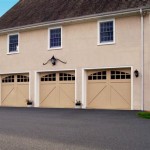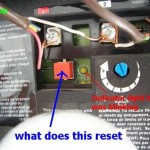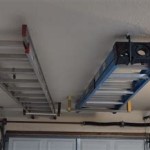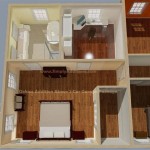Creating The Perfect Garage Lighting Layout Plans
The garage, often relegated to a storage space, can be transformed into a functional and well-lit area with a carefully planned lighting layout. Whether used for parking, DIY projects, or as a workshop, proper illumination is crucial for safety, efficiency, and overall usability. A well-lit garage improves visibility, reduces the risk of accidents, and enhances the ability to perform tasks with precision. This article outlines the key considerations and steps involved in creating the perfect garage lighting layout plan.
Effective garage lighting goes beyond simply installing a single bulb in the center of the ceiling. It requires a strategic approach that considers the size of the garage, the intended uses of the space, and the types of lighting fixtures available. A comprehensive lighting plan addresses both ambient lighting for general illumination and task lighting for specific work areas. It also takes into account factors such as energy efficiency, color temperature, and control options to create a comfortable and functional environment.
Assessing Garage Size and Usage
The first step in creating a garage lighting layout plan is to accurately assess the size of the space. Measure the length, width, and height of the garage to determine the overall volume of the area that needs to be illuminated. This information will be critical in calculating the amount of light required to achieve adequate brightness. A larger garage will naturally require more lighting fixtures than a smaller one.
Beyond the size, it is essential to define the intended uses of the garage. Is it primarily for parking vehicles, or will it also serve as a workshop, storage area, or hobby space? Different activities require different levels of illumination. For example, a workshop area needs significantly more light than a parking space. Identify the specific activities that will take place in the garage and note the areas where those activities will occur. This will help determine the placement and type of task lighting needed.
Consider the existing features of the garage. Are there any windows or skylights that provide natural light? If so, factor in the amount of natural light available during the day and adjust the lighting plan accordingly. Also, note the location of existing electrical outlets and wiring. This may influence the placement of lighting fixtures and minimize the need for extensive electrical work. The assessment should also include identifying any areas that are particularly dark or require special attention, such as corners or areas with low ceilings.
Selecting the Right Types of Lighting Fixtures
Choosing the appropriate types of lighting fixtures is a critical aspect of creating an effective garage lighting layout. There are several options to choose from, each with its own advantages and disadvantages. The most common types of lighting fixtures for garages include fluorescent lights, LED lights, and incandescent lights. However, incandescent lights are less energy-efficient and have a shorter lifespan compared to fluorescent and LED options, making them less desirable for garage lighting.
Fluorescent lights, particularly T8 and T5 fixtures, have been a popular choice for garage lighting due to their energy efficiency and relatively low cost. They provide a bright, diffused light that is suitable for general illumination. However, fluorescent lights can be susceptible to temperature fluctuations and may take some time to warm up in cold weather. They also contain mercury, which requires special disposal procedures.
LED lights have emerged as the preferred choice for garage lighting due to their superior energy efficiency, long lifespan, and high output. LED fixtures are available in a variety of styles, including shop lights, strip lights, and panel lights. They provide instant-on illumination, are not affected by temperature fluctuations, and do not contain hazardous materials. While LED lights may have a higher upfront cost than fluorescent lights, their long-term energy savings and reduced maintenance costs make them a more cost-effective option in the long run. When selecting LED fixtures, pay attention to the lumen output, color temperature, and CRI (Color Rendering Index). Higher lumen output indicates brighter light, while color temperature determines the warmth or coolness of the light.
In addition to overhead lighting, consider adding task lighting to specific work areas. Task lighting provides focused illumination for detailed tasks such as woodworking, automotive repair, or electronics work. Options for task lighting include adjustable work lights, under-cabinet lights, and clamp-on lights. These fixtures can be positioned to provide direct light where it is needed most, improving visibility and reducing eye strain.
The type of light fixtures needed depends on the function. General purpose garages can use ambient ceiling lights, while a garage used for building and repairing items needs brighter, more focused task lighting. The key is to incorporate a combination of lights for both ambient and specific task to ensure a well lit and functional garage.
Developing the Lighting Layout Plan
Once the garage size, usage, and available lighting fixtures have been assessed, the next step is to develop a detailed lighting layout plan. This plan should specify the location of each lighting fixture, the type of fixture to be used, and the wiring configuration. A well-designed lighting layout plan ensures that the garage is adequately illuminated and that the light is distributed evenly throughout the space.
Start by determining the number of fixtures needed to achieve the desired level of illumination. The amount of light required is typically measured in lumens. As a general guideline, aim for 50 lumens per square foot for general garage lighting and 75-100 lumens per square foot for task lighting. Calculate the total lumen output needed for the garage based on its size and intended uses. Then, select lighting fixtures that provide the appropriate lumen output to meet the calculated requirements.
When positioning the lighting fixtures, consider the location of potential obstacles such as garage doors, shelving, and vehicles. Avoid placing fixtures in areas where they could be easily damaged or blocked. It is generally recommended to install overhead lighting fixtures in rows, spaced evenly across the ceiling. This will provide a uniform distribution of light throughout the garage. For task lighting, position fixtures directly above or near the work areas to provide focused illumination. Adjustable work lights can be particularly useful for directing light where it is needed most.
Consider the control options for the lighting fixtures. Separate switches or dimmers can be used to control different zones of lighting, allowing for flexibility in adjusting the brightness based on the task at hand. Motion sensor switches can also be useful for automatically turning on the lights when someone enters the garage, providing added convenience and security. Another option is to implement smart lighting systems. With smart lighting, the lighting can be controlled remotely using a smartphone or tablet.
Drawing a diagram of the garage, including the locations of doors, windows, outlets, and any existing fixtures, is a reliable way to create a lighting layout plan. Mark the proposed locations of the new lighting fixtures on the diagram, noting the type of fixture and its lumen output. Use the diagram to visualize the lighting layout and make any necessary adjustments to ensure optimal coverage and illumination. After creating the diagram, it is time to begin the installation process.
Planning a proper lighting layout is the key to enjoying a safer, more functional garage. Choosing the right types of lights, lumens and placement are key factors in creating this space.

Best Lighting For Your Garage The Ultimate Guide To Led Lights

Garage Lighting 101 Everything You Need To Know Designs Of St Louis

Create The Garage Of Your Dreams By Investing In Right Lighting

How To Choose The Best Lighting For Your Garage Work Home Depot

How To Choose The Best Garage Lighting For Your Home

12 Tips For The Best Garage Lighting Layout Westfarthing Woodworks

How To Choose The Best Lighting For Your Garage Work Home Depot

Garage Lighting Ideas That Will Totally Brighten Your Space Manmadediy

31 Best Garage Lighting Ideas Indoor And Outdoor See You Car From New Point Interior Design Inspirations Luxury

31 Best Garage Lighting Ideas Indoor And Outdoor
Related Posts








